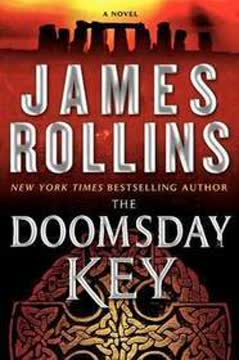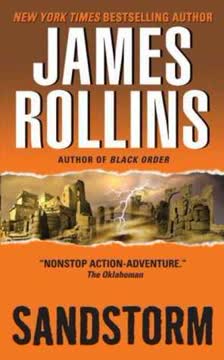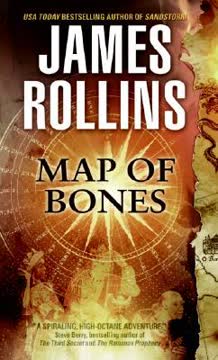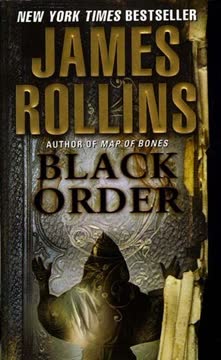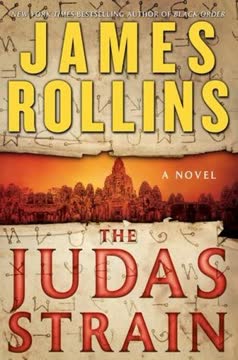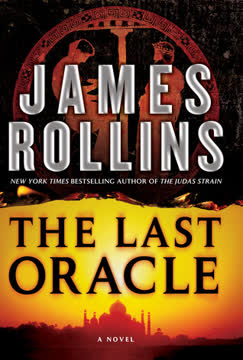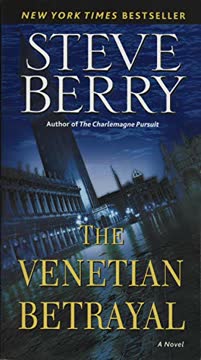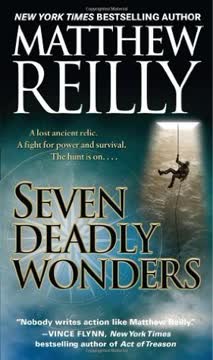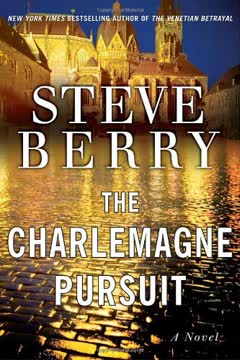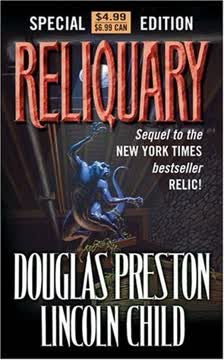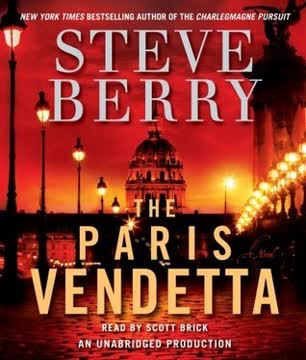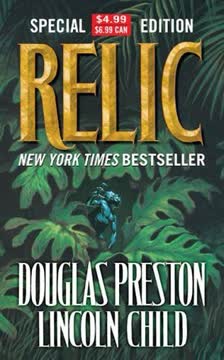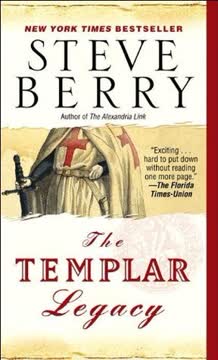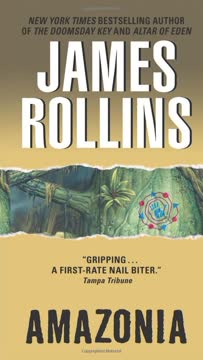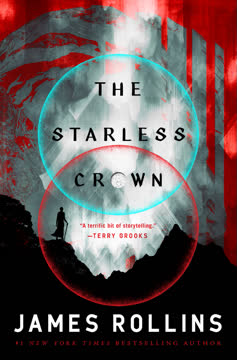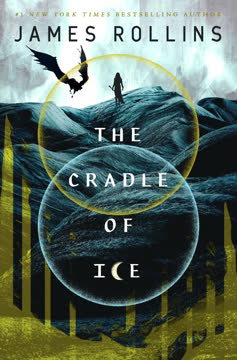Plot Summary
Ancient Plagues Unearthed
In 1086, a royal coroner investigates a mysterious wasting disease in an English village, where people and animals starve despite full bellies. The only clues are pagan symbols and a cryptic entry in the Domesday Book, marking the place as "wasted." The horror is compounded by the discovery of ancient rituals and a blasphemous altar, hinting at a deeper, older evil. The king's men realize the blight is not natural, but a weaponized plague, and the Domesday Book's true purpose may be to map and contain this threat. The sense of dread and secrecy foreshadows a legacy of hidden knowledge and danger that will echo into the modern world.
The Doomsday Book's Secret
The Domesday Book, commissioned by King William, is more than a tax record—it's a map of catastrophe. Some entries are marked "wasted" in red, denoting places erased by an unknown blight. Centuries later, the book's cryptic notations and the legend of a "key" to its secrets become the obsession of scholars and conspirators alike. The book's connection to ancient pagan sites and the mysterious deaths it records suggest a hidden war between Christianity and older, darker forces. The legend of a "Doomsday Key" that can unlock or contain this power becomes a tantalizing, dangerous myth.
Modern Catastrophe Ignites
In present-day Mali, a Red Cross camp is attacked and burned, but the true horror is the experimental corn grown there. Genetically modified by Viatus Corporation, the crop is meant to end hunger, but instead, it spreads a wasting disease. Jason Gorman, a young scientist, is murdered after sending evidence to his father, a U.S. senator. His death is marked by a branded pagan cross, linking the modern tragedy to the ancient blight. The massacre is covered up, but the seeds of disaster—and the conspiracy behind them—are sown across continents.
Sigma Force Mobilizes
Commander Grayson Pierce and Sigma Force, a secret DARPA-backed team of soldier-scientists, are drawn into the crisis. As they investigate the Mali massacre, they uncover a web of ecoterrorism, corporate malfeasance, and ancient secrets. The team splits: some pursue the genetic mystery in the U.S., while Gray is called to Rome by an old flame, Rachel Verona, whose uncle, a Vatican archaeologist, is attacked after a church bombing. The branded cross appears again, tying the Vatican to the African disaster. The emotional stakes rise as personal loyalties and global threats collide.
The Mark of Wasting
The quartered circle—a pagan cross—appears on victims in Africa, the Vatican, and the U.S. Each death is ritualistic, the bodies wasted by a mysterious agent. Sigma's analysts trace the symbol's history from Druidic earth worship to Celtic Christianity, realizing it marks not just territory, but a philosophy: the earth must be protected, even through violence. The symbol is also a warning, a claim of responsibility, and a clue to the deeper plot. The emotional impact is heightened by the personal losses suffered by the victims' families and the growing sense of a global conspiracy.
Genetic Conspiracies
Investigations at Princeton and Viatus reveal that the genetically modified corn is contaminated with a fungal gene from ancient peat bog mummies. The gene is unstable, spreading uncontrollably and rendering food indigestible—a modern echo of the medieval wasting. The corporation's CEO, Ivar Karlsen, is both visionary and villain, believing population control is necessary to save the world. The Guild, a shadowy organization, manipulates events from behind the scenes, using corporate, political, and scientific assets to pursue the Doomsday Key. The emotional tension mounts as Sigma races to prevent a global famine.
The Assassin's Web
Seichan, a deadly assassin with ties to both Sigma and the Guild, becomes a wild card. Her loyalties are ambiguous, her methods brutal, and her past with Gray is fraught with unresolved feelings. As she kidnaps, poisons, and ultimately aids the team, the lines between friend and foe blur. The Guild's reach is everywhere, and even trusted allies may be traitors. The emotional arc is one of suspicion, regret, and the desperate hope for redemption.
The Vatican Explosion
A bombing at St. Peter's Basilica kills a priest and leaves Rachel's uncle in a coma. The attack is linked to a relic: a mummified finger in a leather pouch, marked with the spiral and cross. The relic is the key to the Doomsday Book's secret, and multiple factions will kill to possess it. The Vatican's own history of prophecy—Saint Malachy's list of popes and the coming apocalypse—adds a layer of urgency and dread. The emotional stakes are personal for Rachel, who must balance duty, grief, and her rekindled feelings for Gray.
The Cross and the Spiral
The investigation leads to the Lake District, where ancient stone circles, peat bogs, and Druidic symbols reveal the deep roots of the blight. The cross and spiral, once symbols of life and earth, have become marks of death and warning. The team uncovers a Neolithic tomb, bog mummies, and evidence that the plague was once used as a weapon in a war between pagans and Christians. The emotional resonance is one of awe and horror at the continuity of human conflict and the persistence of ancient fears.
The Peat Bog Mystery
The bog mummies are revealed to be victims of a fungal parasite that starves its host. The fungus, weaponized in the past, is now resurrected through genetic engineering. The tomb's occupant is traced to an Egyptian princess, linking the British Isles' legends of the Black Madonna and Merlin to real historical migrations. The search for the Doomsday Key becomes a quest for both a cure and an understanding of humanity's oldest stories. The emotional journey is one of discovery, loss, and the hope for salvation.
The Black Madonna's Legacy
The legend of the Black Madonna—a fusion of pagan earth goddess and Christian Virgin—becomes central. Saint Malachy, famed for his healing miracles and apocalyptic prophecies, is revealed to have hidden the Doomsday Key in his own tomb. The team races to France, to the Abbey of Clairvaux, now a maximum-security prison, where Malachy's incorrupt body and a canopic jar hold the cure. The emotional climax is reached as Rachel, poisoned and dying, faces her mortality, and Gray must risk everything to save her.
The Pagan Queen's Tomb
In the depths of Clairvaux, the team discovers three glass coffins: the Egyptian queen, Saint Malachy, and Saint Bernard. The queen's canopic jar contains a white powder—the antifungal cure. Malachy's journal, filled with prophecies, is lost in the ensuing chaos. The Guild's betrayal is revealed as Wallace, the team's archaeologist, is exposed as a double agent and Echelon member. The emotional toll is devastating: trust is shattered, and the cost of knowledge is paid in blood.
The Doomsday Key Unlocked
As the Guild's mercenaries attack, the team narrowly escapes, using the ancient mechanisms of the tomb. The cure is synthesized and distributed worldwide, halting the spread of the blight. The conspiracy is exposed, but not without loss: friends die, secrets are buried, and the world is left changed. The emotional resolution is bittersweet—victory is tempered by grief, and the future remains uncertain.
The Guild's Betrayal
The Guild's true nature is revealed: a secret society with roots in Freemasonry, manipulating global events for its own ends. Krista Magnussen, the chief geneticist, is exposed as a ruthless operative, and Wallace's betrayal cuts deep. The emotional arc is one of anger, vengeance, and the realization that the war is far from over.
The Svalbard Inferno
In Norway, the Svalbard Global Seed Vault is bombed and buried in an avalanche, trapping dozens inside. Sigma and their allies fight a desperate battle against mercenaries and nature itself. The vault's survival—and the world's genetic heritage—hangs by a thread. The emotional stakes are global, as the team faces annihilation and the loss of hope for future generations.
The Final Vault
In the climax beneath Clairvaux, Gray and Seichan solve the puzzle of the cross, using ancient navigation and astronomy to unlock the tomb. The cure is retrieved, but not before a final betrayal and a deadly explosion. The survivors escape, but the cost is high. The emotional catharsis is one of exhaustion, relief, and the sobering knowledge that evil endures.
The Price of Knowledge
The cure is distributed, the conspirators are exposed, and the world is saved from famine. But the Guild remains in the shadows, and the cost in lives and innocence is steep. Relationships are tested, grief is endured, and the future is left open. The emotional resolution is one of hard-won wisdom: knowledge is power, but it always comes at a price.
Characters
Grayson Pierce
Gray is the heart of Sigma Force: a brilliant, driven field commander torn between duty and personal loyalty. His scientific mind and soldier's instincts make him uniquely suited to unraveling the Doomsday mystery. Gray's relationships—with Rachel, Seichan, and his team—are fraught with unresolved emotion, guilt, and longing. He is haunted by the cost of his choices, especially when friends die or are betrayed. Gray's arc is one of growth from isolated operator to a man who accepts the necessity of trust, even when it hurts.
Rachel Verona
An Italian carabinieri and niece to Monsignor Vigor Verona, Rachel is both a skilled detective and a deeply compassionate woman. Her connection to the Vatican bombing and her personal loss drive her to seek the truth, even as she faces her own mortality. Rachel's relationship with Gray is complex: former lovers, they are drawn together by crisis but separated by duty and trauma. Her arc is one of resilience, as she faces betrayal, poisoning, and the burden of prophecy, ultimately emerging stronger and more self-aware.
Seichan
A half-Vietnamese, half-European operative, Seichan is both Sigma's greatest threat and its most unlikely ally. Trained by the Guild, she is ruthless, brilliant, and emotionally scarred. Her ambiguous loyalties and history with Gray create constant tension. Seichan's arc is one of painful self-discovery: forced to betray and be betrayed, she ultimately chooses to help Sigma, risking her life and her heart. Her struggle for redemption and belonging is one of the novel's most poignant threads.
Monk Kokkalis
Monk is Gray's closest ally: a former Special Forces soldier with a prosthetic hand and a sharp wit. His trauma from past missions and his devotion to his family (especially his wife Kat and daughter Penelope) ground him emotionally. Monk's arc is one of recovery and acceptance, as he returns to fieldwork, faces loss, and learns to balance duty with love. His humor and resilience provide much-needed levity and strength to the team.
Ivar Karlsen
The head of Viatus International, Karlsen is a man driven by a genuine desire to save the world from overpopulation and famine. His willingness to make hard choices—sacrificing the few for the many—leads him down a dark path. Manipulated by the Guild and betrayed by his own ambition, Karlsen becomes both villain and victim. His arc is one of hubris, guilt, and eventual atonement, as he helps distribute the cure and faces justice.
Krista Magnussen
Viatus's chief geneticist and a Guild operative, Krista is brilliant, ruthless, and utterly amoral. She orchestrates much of the novel's violence, including the African massacre and the betrayal of her own allies. Her relationship with Karlsen is one of calculated seduction and ultimate betrayal. Krista's arc is a descent into fanaticism, as she pursues the Doomsday Key at any cost, ultimately meeting a violent end.
Wallace Boyle
An archaeologist and expert on Neolithic Britain, Wallace is initially a trusted ally, guiding the team through ancient mysteries. His warmth and humor mask a deep duplicity: he is a Guild agent and, possibly, a member of Echelon. His betrayal is devastating, and his death is both a personal and symbolic loss. Wallace's arc is a cautionary tale about the dangers of hidden agendas and the cost of trust.
Senator Sebastian Gorman
Gorman's personal tragedy—his son's murder in Mali—drives much of the investigation. As a U.S. senator, he wields influence but is also manipulated by Karlsen and the Guild. His arc is one of grief, rage, and eventual redemption, as he helps bring the truth to light and supports the distribution of the cure.
John Creed
A new Sigma agent and geneticist, Creed is eager, brilliant, and earnest. His inexperience and idealism make his death at the hands of the Guild especially poignant. Creed's arc is brief but impactful, serving as a reminder of the cost of the fight and the innocence lost in the pursuit of knowledge.
Monsignor Vigor Verona
Rachel's uncle and a Vatican archaeologist, Vigor is a source of historical and theological insight. His near-death and recovery frame the novel's spiritual themes. Vigor's arc is one of endurance and faith, providing hope and perspective amid chaos.
Plot Devices
Dual Timelines and Historical Echoes
The novel weaves together medieval and contemporary narratives, using the Domesday Book's "wasted" entries as a bridge. The repetition of symbols, plagues, and betrayals across centuries creates a sense of inevitability and resonance. This structure allows for foreshadowing, dramatic irony, and a deepening of the central mystery.
Symbolism and Codes
The recurring motifs of the quartered circle, spiral, and Black Madonna serve as both literal clues and thematic anchors. The use of ancient symbols as codes to unlock tombs, mechanisms, and secrets ties the intellectual puzzle to the emotional and spiritual journey of the characters. The interplay of pagan and Christian iconography underscores the novel's exploration of faith, science, and power.
Scientific Realism and Biothriller Elements
The plot hinges on plausible (if speculative) science: the resurrection of an ancient fungal blight through genetic modification, the instability of GM crops, and the global consequences of biotech hubris. The use of real-world crises—bee die-offs, food shortages, and corporate malfeasance—grounds the thriller in contemporary anxieties. The "Doomsday Key" is both a literal cure and a metaphor for the double-edged nature of knowledge.
Betrayal and Double Agents
The narrative is driven by shifting alliances, hidden agendas, and the ever-present threat of betrayal. The Guild's infiltration of every level of the investigation creates constant suspense and paranoia. The emotional impact of betrayal—especially by trusted friends and lovers—raises the stakes and humanizes the global conflict.
Race Against Time and Global Stakes
The plot is structured as a ticking clock: Rachel's poisoning, the spread of the blight, and the Guild's escalating violence all create relentless urgency. The use of multiple, converging storylines—Sigma's investigation, the Vatican's secrets, the Svalbard siege—heightens tension and allows for dramatic cross-cutting and cliffhangers.
Ancient Mechanisms and Puzzle-Solving
The climax hinges on the team's ability to interpret ancient engineering, astronomy, and symbolism to unlock the tomb and retrieve the cure. The use of real historical sites, artifacts, and legends adds authenticity and wonder. The puzzle-solving is not just intellectual, but emotional: it requires trust, sacrifice, and the willingness to risk everything for others.
Analysis
The Doomsday Key is a high-octane blend of historical mystery, scientific thriller, and emotional drama. At its core, the novel interrogates humanity's perennial struggle with the unintended consequences of progress: how ancient wisdom and modern hubris can both save and destroy. The use of real-world crises—genetic engineering, food security, and ecological collapse—grounds the story in urgent contemporary debates. The emotional arcs of the characters, especially the interplay of trust and betrayal, elevate the thriller beyond mere spectacle. The novel warns that the pursuit of knowledge, unchecked by humility and compassion, can unleash horrors as old as civilization itself. Yet it also offers hope: that redemption is possible, that the past can guide the present, and that even in the face of apocalypse, the bonds of love and loyalty endure. The Doomsday Key ultimately asks: What are we willing to sacrifice to save the world—and at what cost?
Last updated:
Review Summary
The Doomsday Key receives mostly positive reviews, with readers praising its fast-paced action, blend of history and science, and engaging characters. Many appreciate Rollins' ability to weave complex plots involving global conspiracies, ancient artifacts, and modern technology. Some critics find the plot overly convoluted or implausible at times. Fans of the Sigma Force series particularly enjoy the character development and ongoing storylines. Several reviewers mention learning interesting historical and scientific facts from the book, adding to their enjoyment of the thriller.
Sigma Force Series
Similar Books
Download PDF
Download EPUB
.epub digital book format is ideal for reading ebooks on phones, tablets, and e-readers.
